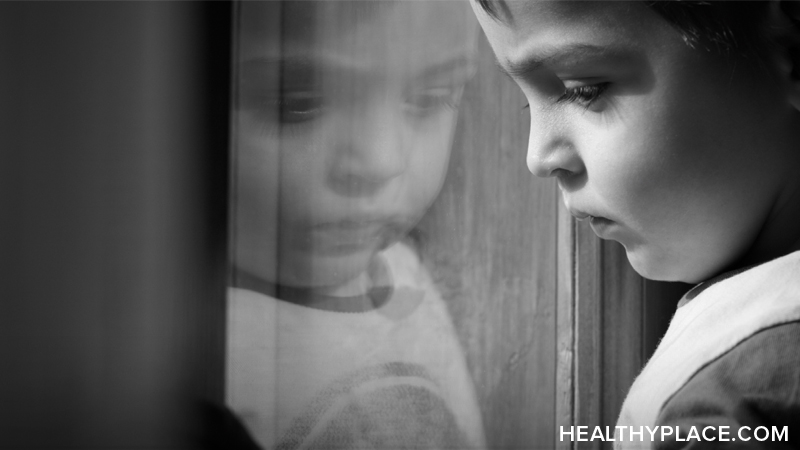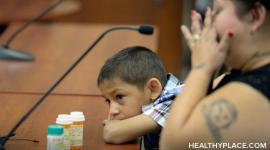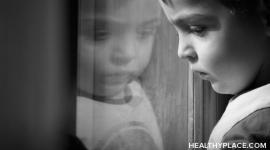Types of Child Abuse

Learn about the major types of child abuse and what constitutes physical abuse, sexual abuse, emotional abuse and neglect of a child.
4 Major Types of Child Abuse
Types of child abuse are broken down in four distinct categories:
What is Physical Child Abuse?
Physical child abuse is an injury resulting from physical aggression. Even if the injury was not intended, the act is considered physical abuse. The injury from physical child abuse may be the result of:
- Beating, slapping, or hitting.
- Pushing, shaking, kicking, or throwing.
- Pinching, biting, choking, or hair-pulling.
- Burning with cigarettes, scalding water, or other hot objects.
- Severe physical punishment.
Is physical punishment the same as physical abuse?
Physical abuse is an injury resulting from physical aggression. Physical punishment is the use of physical force with the intent of inflicting bodily pain, but not injury, for the purpose of correction or control. As you can see, physical punishment can easily get out of control and become physical abuse.
Some other specific types of physical child abuse are:
- Shaken Baby Syndrome - Shaking a baby or toddler can cause serious head injuries.
- Munchausen by Proxy Syndrome - Inducing medical illness in a child or wrongly convincing others that a child is sick is both dangerous and abusive.
- Drug use during pregnancy - Drug and alcohol use during pregnancy or lactation can be harmful to your child, leading to problems such as Fetal Alcohol Syndrome
Hundreds of thousands of children are physically abused each year by someone close to them, and thousands of children die from the injuries. For those who survive, the emotional scars are deeper than the physical scars.
Some Signs of Physical Child Abuse
- Burns, bite marks, cuts, bruises, or welts in the shape of an object.
- Resistance to going home.
- Fear of adults.
What is Child Sexual Abuse?
Sexual abuse of a child is any sexual act between an adult and a child, including penetration, intercourse, incest, rape, oral sex, and sodomy. Other examples include:
- Fondling - Touching or kissing a child's genitals, making a child fondle an adult's genitals.
- Violations of bodily privacy - Forcing a child to undress, spying on a child in the bathroom or bedroom.
- Exposing children to adult sexuality - Performing sexual acts in front of a child, exposing genitals, telling "dirty" stories, showing pornography to a child.
- Commercial exploitation - Sexual exploitation through child prostitution or child pornography.
Regardless of the child's behavior or reactions, it is the responsibility of the adult not to engage in sexual acts with children. Sexual abuse is never the child's fault. Sexual child abusers can be:
- Fathers, mothers, siblings, or other relatives.
- Childcare professionals or babysitters.
- Clergy, teachers, or athletic coaches.
- Foster parents or host families of foreign-exchange students.
- Neighbors or friends.
- Strangers
Some Signs of Sexual Child Abuse
- Inappropriate interest in or knowledge of sexual acts.
- Seductiveness.
- Avoidance of things related to sexuality, or rejection of own genitals or body.
- Either over-compliance or excessive aggression.
- Fear of a particular person or family member.
Warning Signs of Online Sexual Child Abuse
- Your child spends large amounts of time online, especially at night.
- You find pornography on your child's computer.
- Your child receives phone calls from men you don't know, or is making calls, sometimes long distance, to numbers you don't recognize.
- Your child receives mail, gifts, or packages from someone you don't know.
- Your child turns the computer monitor off or quickly changes the screen on the monitor when you come into the room.
- Your child becomes withdrawn from the family.
- Your child is using an online account belonging to someone else.
Source: U.S. Department of Justice, Federal Bureau of Investigation
What is Emotional Child Abuse?
Emotional child abuse is any attitude, behavior, or failure to act that interferes with a child's mental health or social development. It can range from a simple verbal insult to an extreme form of punishment. Emotional abuse is almost always present when another form of abuse is found. Surprisingly, emotional abuse can have more long-lasting negative psychiatric effects than either physical abuse or sexual abuse.
Other names for emotional abuse are:
- Verbal abuse
- Mental abuse
- Psychological maltreatment or psychological abuse
Emotional child abuse can come from adults or from other children:
- Parents or caregivers
- Teachers or athletic coaches
- Siblings
- Bullies at school or elsewhere
- Middle- and high-school students in social cliques
What is Child Neglect?
Child neglect is a very common type of child abuse. According to Child Welfare Information Gateway, more children suffer from neglect than from physical and sexual abuse combined. Yet victims are not often identified, primarily because neglect is a type of child abuse that is an act of omission - of not doing something.
Some overlap exists between the definitions of emotional abuse and emotional neglect. However, neglect is a pattern of failing to provide for a child's basic needs. A single act of neglect might not be considered child abuse, but repeated neglect is definitely child abuse. There are three basic types of neglect; physical neglect, educational neglect, and emotional neglect.
| Physical Neglect | Failure to provide food, clothing appropriate for the weather, supervision, a home that is hygienic and safe, and/or medical care, as needed. |
| Educational Neglect | Failure to enroll a school-age child in school or to provide necessary special education. This includes allowing excessive absences from school. |
| Emotional Neglect | Failure to provide emotional support, love, and affection. This includes neglect of the child's emotional needs and failure to provide psychological care, as needed. |
Some Signs of Child Neglect:
- Clothing unsuited to the weather.
- Being dirty or unbathed.
- Extreme hunger.
- Apparent lack of supervision.
Sources:
Administration for Children and Families
National Clearinghouse on Child Abuse and Neglect Information
National Institutes of Health -National Library of Medicine
U.S. Department of Health and Human Services, National Center on Child Abuse and Neglect
APA Reference
Tracy, N.
(2021, December 17). Types of Child Abuse, HealthyPlace. Retrieved
on 2024, April 28 from https://www.healthyplace.com/abuse/child-abuse-information/types-child-abuse



